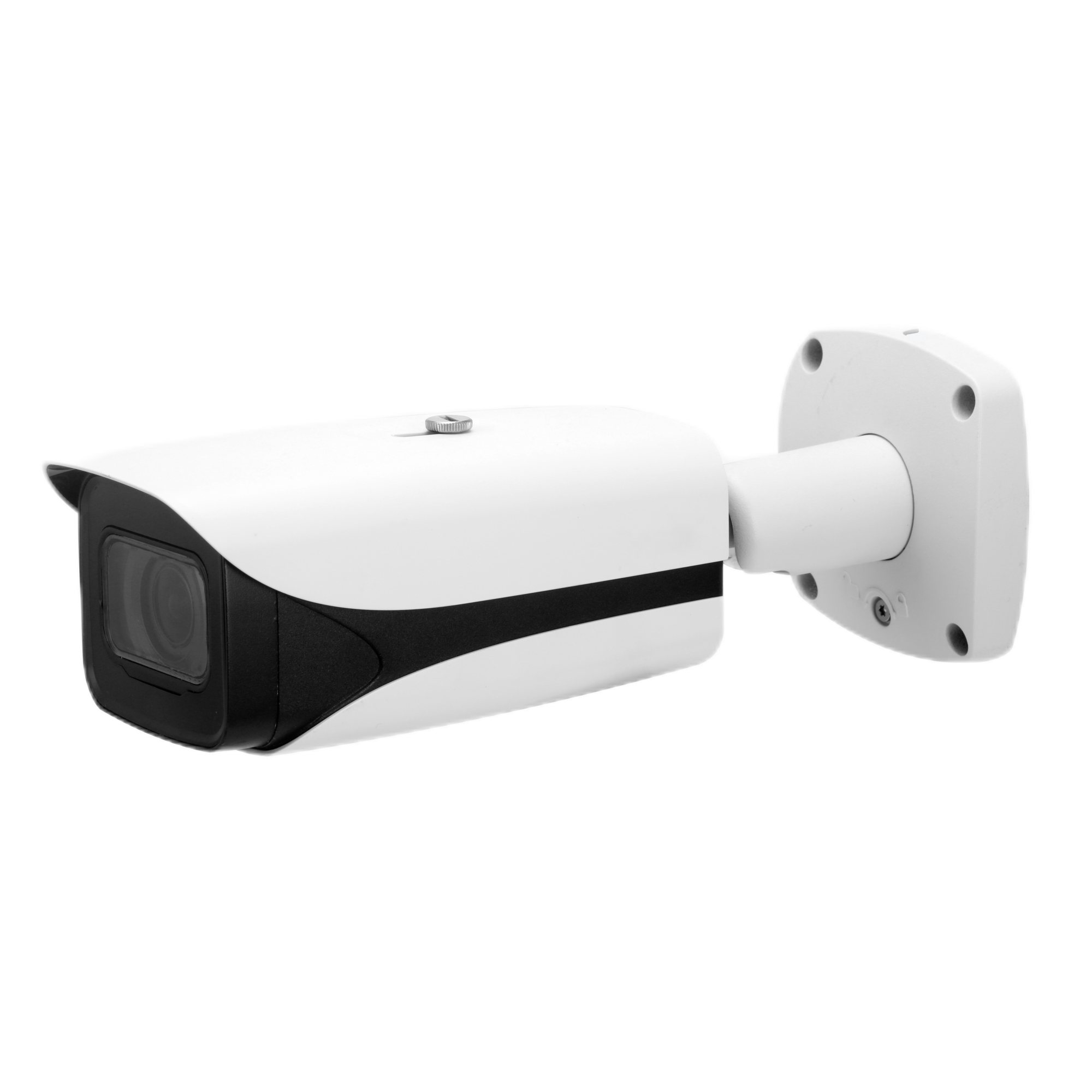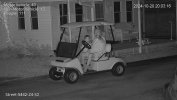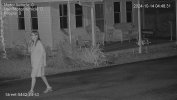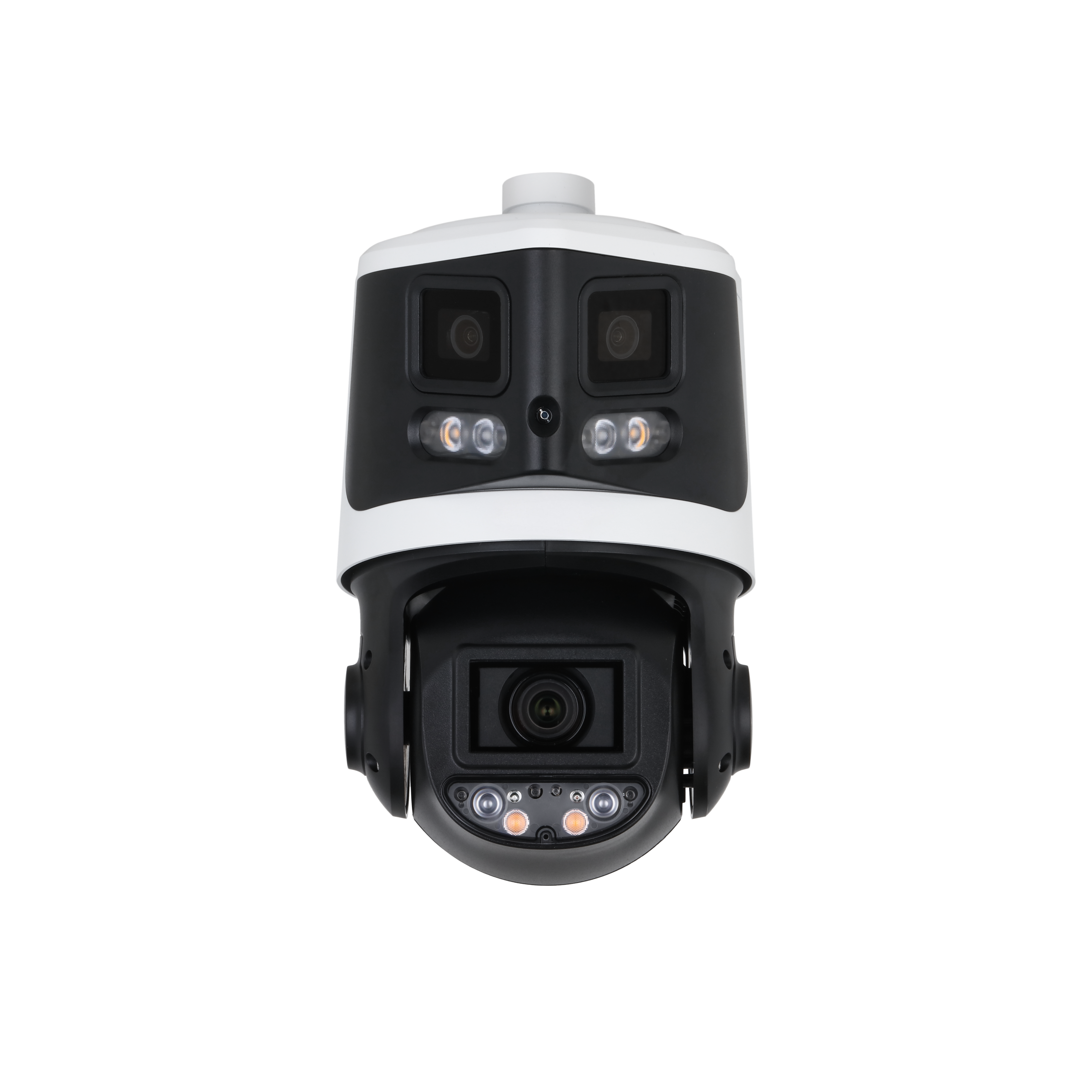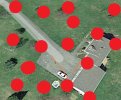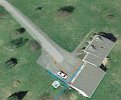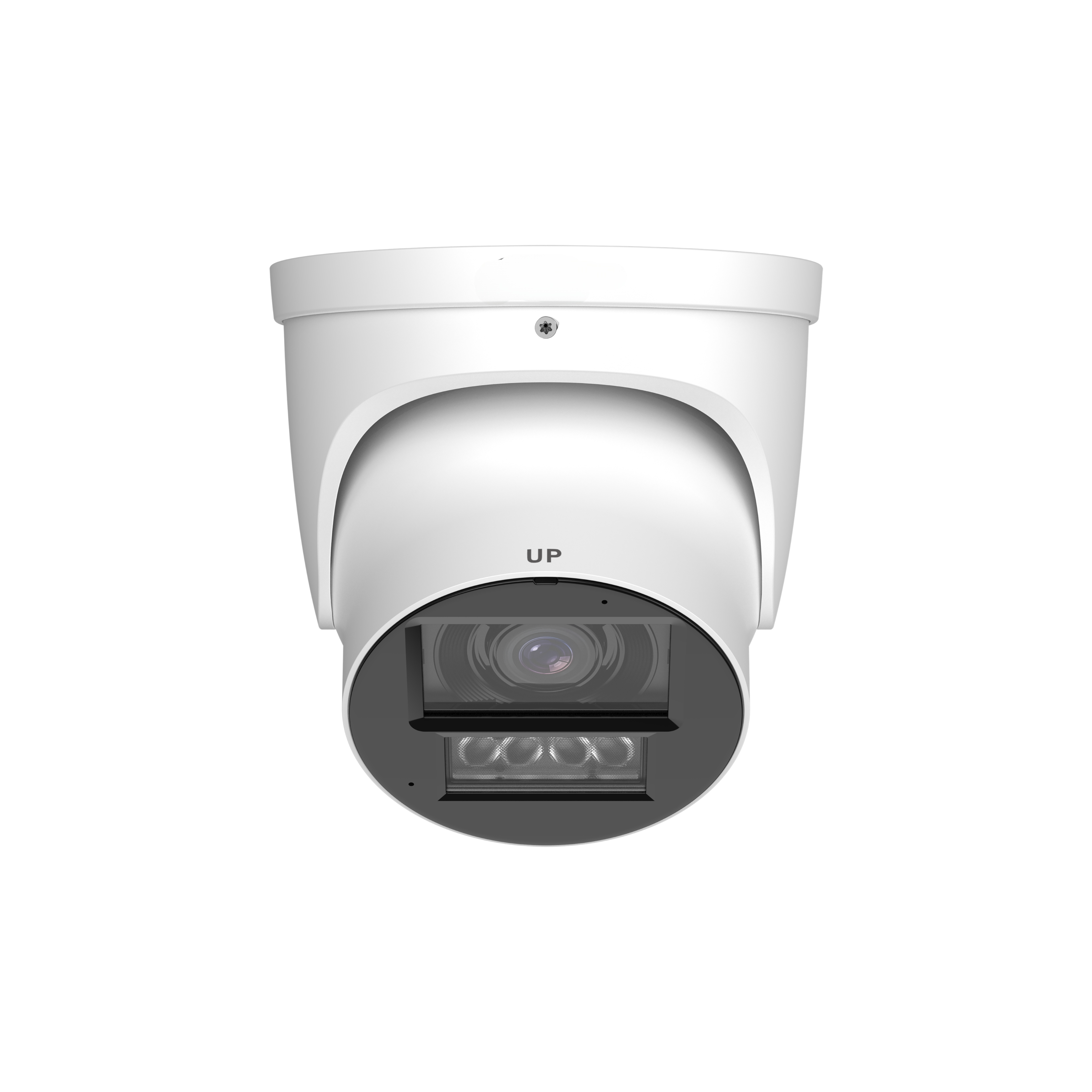To answers your first sentence, no, it's an open porch, I didn't grab a photo from the spot that I said but here's a capture from the current PTZ at the rod dot.

In this photo, the yellow dot is above the ext. Light, green is below.
What I'd like to have is watch the area in the yellow swash: in the following image.
Here's an updated image showing measurements. The pink circle in this photo is an option to mount a camera as well:

This is why I was hoping for a IR based dual camera/lens unit. One to look to the right side and the left for the driveway. There are 2 ext. lights, one on each end of the garage. The camera pointing out to the field is just there to show that I have one, it's more to watch animals, there's no windows or doors on that side of the house.
BUT, I can't find a good dual lens camera with the right size sensor with IR. I suppose where the pink is, I could have just a 2.8mm lens or 4mm (varied focal?) to cover the driveway and possibly a doorbell camera for the porch? As a reminder, the PTZ would be moved to out back where you see the small wooden deck, it would below the roof eve looking out back for the field.
I found this camera:
EmpireTech IPC-T54IR-ZE-S3 1/1.8" CMOS 4MP IR Starlight 2.7mm–12mm Vari-focal Turret Security Camera. I have a
Hikvision ColorVu DS-2CD2347G1-L 4MP Outdoor Network Turret that I used to use at the old house. It has a 1/1.8" sensor and IR, but it just blows the person's face right out at night.


